Impact of Green Wall and Roof Applications on Energy Consumption and Thermal Comfort for Climate Resilient Buildings
Abstract
1. Introduction
2. Materials and Methods
2.1. Case Study Building
2.2. Simulation Study
2.3. Green Wall and Roof Applications
3. Results and Discussion
4. Conclusions
Author Contributions
Funding
Institutional Review Board Statement
Informed Consent Statement
Data Availability Statement
Conflicts of Interest
References
- Bosu, I.; Mahmoud, H.; Ookawara, S.; Hassan, H. Applied single and hybrid solar energy techniques for building energy consumption and thermal comfort: A comprehensive review. Sol. Energy 2023, 259, 188–228. [Google Scholar] [CrossRef]
- Barbosa, E.F.; Labaki, L.C.; Castro, A.P.; Lopes, F.S. Energy Efficiency and Thermal Comfort Analysis in a Higher Education Building in Brazil. Sustainability 2024, 16, 462. [Google Scholar] [CrossRef]
- Rodríguez, C.M.; Coronado, M.C.; Medina, J.M. Thermal comfort in educational buildings: The Classroom-Comfort-Data method applied to schools in Bogotá, Colombia. Build. Environ. 2021, 194, 107682. [Google Scholar]
- Özbey, M.F.; Turhan, C. A novel comfort temperature determination model based on psychology of the participants for educational buildings in a temperate climate zone. J. Build. Eng. 2023, 76, 107415. [Google Scholar]
- Kumar, D.; Alam, M.; Zou, P.X.; Sanjayan, J.G.; Memon, R.A. Comparative analysis of building insulation material properties and performance. Renew. Sustain. Energy Rev. 2020, 131, 110038. [Google Scholar]
- Shao, Z.; Li, Y.; Huang, P.; Abed, A.M.; Ali, E.; Elkamchouchi, D.H.; Abbas, M.; Zhang, G. Analysis of the opportunities and costs of energy saving in lightning system of library buildings with the aid of building information modelling and Internet of things. Fuel 2023, 352, 128918. [Google Scholar]
- Pragati, S.; Shanthi Priya, R.; Pradeepa, C.; Senthil, R. Simulation of the Energy Performance of a Building with Green Roofs and Green Walls in a Tropical Climate. Sustainability 2023, 15, 2006. [Google Scholar] [CrossRef]
- Askari, M.; Jahangir, M.H. Evaluation of thermal performance and energy efficiency of a Trombe wall improved with dual phase change materials. Energy 2023, 284, 128587. [Google Scholar]
- Mousavi, S.; Gheibi, M.; Wacławek, S.; Behzadian, K. A novel smart framework for optimal design of green roofs in buildings conforming with energy conservation and thermal comfort. Energy Build. 2023, 291, 113111. [Google Scholar]
- Birim, N.G.; Turhan, C.; Atalay, A.S.; Gokcen Akkurt, G. The Influence of Meteorological Parameters on PM10: A Statistical Analysis of an Urban and Rural Environment in Izmir/Türkiye. Atmosphere 2023, 14, 421. [Google Scholar] [CrossRef]
- He, Y.; Wong, N.H.; Kvan, T.; Liu, M.; Tong, S. How green building rating systems affect indoor thermal comfort environments design. Build. Environ. 2022, 224, 109514. [Google Scholar] [CrossRef]
- Turhan, C.; Atalay, A.S.; Gokcen Akkurt, G. An Integrated Decision-Making Framework for Mitigating the Impact of Urban Heat Islands on Energy Consumption and Thermal Comfort of Residential Buildings. Sustainability 2023, 15, 9674. [Google Scholar] [CrossRef]
- Urban GreenUP Project. The European Union’s Horizon 2020 Research and Innovation Programme, Grant Agreement No. 730426; European Commission: Brussels, Belgium, 2021. [Google Scholar]
- Charoenkit, S.; Yiemwattana, S. The performance of outdoor plants in living walls under hot and humid conditions. Landsc. Ecol. Eng. 2021, 17, 55–73. [Google Scholar]
- Li, J.; Zheng, B.; Chen, X.; Qi, Z.; Bedra, K.B.; Zheng, J.; Zilong, L.; Liu, L. Study on a full-year improvement of indoor thermal comfort by different vertical greening patterns. J. Build. Eng. 2021, 35, 101969. [Google Scholar] [CrossRef]
- Sova, U. A Building Covered with Many Green Plants. Unsplash. Available online: https://unsplash.com/it/foto/un-edificio-ricoperto-da-tante-piante-verdi-4WBEtOhi2nk (accessed on 28 March 2025).
- Assimakopoulos, M.N.; De Masi, R.F.; de Rossi, F.; Papadaki, D.; Ruggiero, S. Green wall design approach towards energy performance and indoor comfort improvement: A case study in Athens. Sustainability 2020, 12, 3772. [Google Scholar] [CrossRef]
- Razzaghmanesh, M.; Razzaghmanesh, M. Thermal performance investigation of a living wall in a dry climate of Australia. Build. Environ. 2017, 112, 45–62. [Google Scholar]
- Olivieri, F.; Olivieri, L.; Neila, J. Experimental study of the thermal-energy performance of an insulated vegetal façade under summer conditions in a continental Mediterranean climate. Build. Environ. 2014, 77, 61–76. [Google Scholar]
- Jamei, E.; Chau, H.W.; Seyedmahmoudian, M.; Mekhilef, S.; Hafez, F.S. Green roof and energy—Role of climate and design elements in hot and temperate climates. Heliyon 2019, 9, e15917. [Google Scholar]
- Jun, C.; Shuai, H.; Qin, D.; Li, J.C.; Wang, L. Green roof cooling contributed by plant species with different photosynthetic strategies. Energy Build. 2019, 195, 45–50. [Google Scholar]
- Pérez, G.; Coma, J.; Chafer, M.; Cabeza, L.F. Seasonal influence of leaf area index (LAI) on the energy performance of a green façade. Build. Environ. 2022, 207, 108497. [Google Scholar]
- Raji, B.; Tenpierik, M.J.; van den Dobbelsteen, A. The impact of greening systems on building energy performance: A literature review. Renew. Sustain. Energy Rev. 2015, 45, 610–623. [Google Scholar]
- Yang, H.; Zhang, Y.; Zhang, Y. Energy performance of green roofs in urban buildings: A simulation study. Energy Build. 2008, 40, 1466–1478. [Google Scholar]
- Coutts, A.M.; Daly, E.; Beringer, J.; Tapper, N.J. Assessing practical measures to reduce urban heat: Green and cool roofs. Build. Environ. 2013, 70, 266–276. [Google Scholar]
- Berardi, U.; GhaffarianHoseini, A. State-of-the-art analysis of the environmental benefits of green roofs. Appl. Energy 2014, 115, 411–428. [Google Scholar]
- Manso, M.; Castro-Gomes, J. Green wall systems: A review of their characteristics. Renew. Sustain. Energy Rev. 2015, 41, 863–871. [Google Scholar]
- Santamouris, M. Cooling the cities—A review of reflective and green roof mitigation technologies to fight heat island and improve comfort in urban environments. Sol. Energy 2014, 103, 682–703. [Google Scholar]
- Coma, J.; Pérez, G.; de Gracia, A.; Bures, S.; Urrestarazu, M.; Cabeza, L.F. Vertical greenery systems for energy savings in buildings: A comparative study between green walls and green facades. Build. Environ. 2016, 111, 228–237. [Google Scholar]
- Ascione, F.; Bianco, N.; De Stasio, C.; Mauro, G.M.; Vanoli, G.P. Simulation-based model predictive control by the use of TRNSYS and GenOpt: A new approach applied to a nearly Zero-Energy Building. Energy Build. 2013, 60, 58–69. [Google Scholar]
- Kottek, M.; Grieser, J.; Beck, C.; Rudolf, B.; Rubel, F. World map of the Köppen-Geiger climate classification updated. Meteorol. Z. 2006, 15, 259–263. [Google Scholar]
- Extreme Maximum, Minimum and Average Temperatures Measured in Long Period (°C) for Ankara. (In Turkish). Available online: https://www.mgm.gov.tr/veridegerlendirme/il-ve-ilceler-istatistik.aspx (accessed on 2 February 2024).
- Design Builder Software Ltd. DesignBuilder v.7.1.2.006; Design Builder Software Ltd.: Stroud, UK, 2022. [Google Scholar]
- Turhan, C.; Ghazi, S. Energy Consumption and Thermal Comfort Investigation and Retrofitting Strategies for an Educational Building: Case Study in a Temperate Climate Zone. J. Build. Des. Environ. 2023, 2, 16869. [Google Scholar]
- Yu, C. The Intervention of Plants in the Conflicts Between Buildings and Climate—A Case Study in Singapore. Ph.D. Thesis, National University of Singapore, Singapore, 2006. [Google Scholar]
- ASHRAE. Measurement of Energy, Demand, and Water Savings. In ASHRAE Guideline 14-2014; ASHRAE: Atlanta, GA, USA, 2014. [Google Scholar]
- Wahba, S.; Kamil, B.; Nassar, K.; Abdelsalam, A. Green envelop impact on reducing air temperature and enhancing outdoor thermal comfort in arid climates. Civ. Eng. J. 2019, 5, 1124–1135. [Google Scholar] [CrossRef]
- Bungau, C.C.; Bungau, T.; Prada, I.F.; Prada, M.F. Green Buildings as a Necessity for Sustainable Environment Development: Dilemmas and Challenges. Sustainability 2022, 14, 13121. [Google Scholar] [CrossRef]
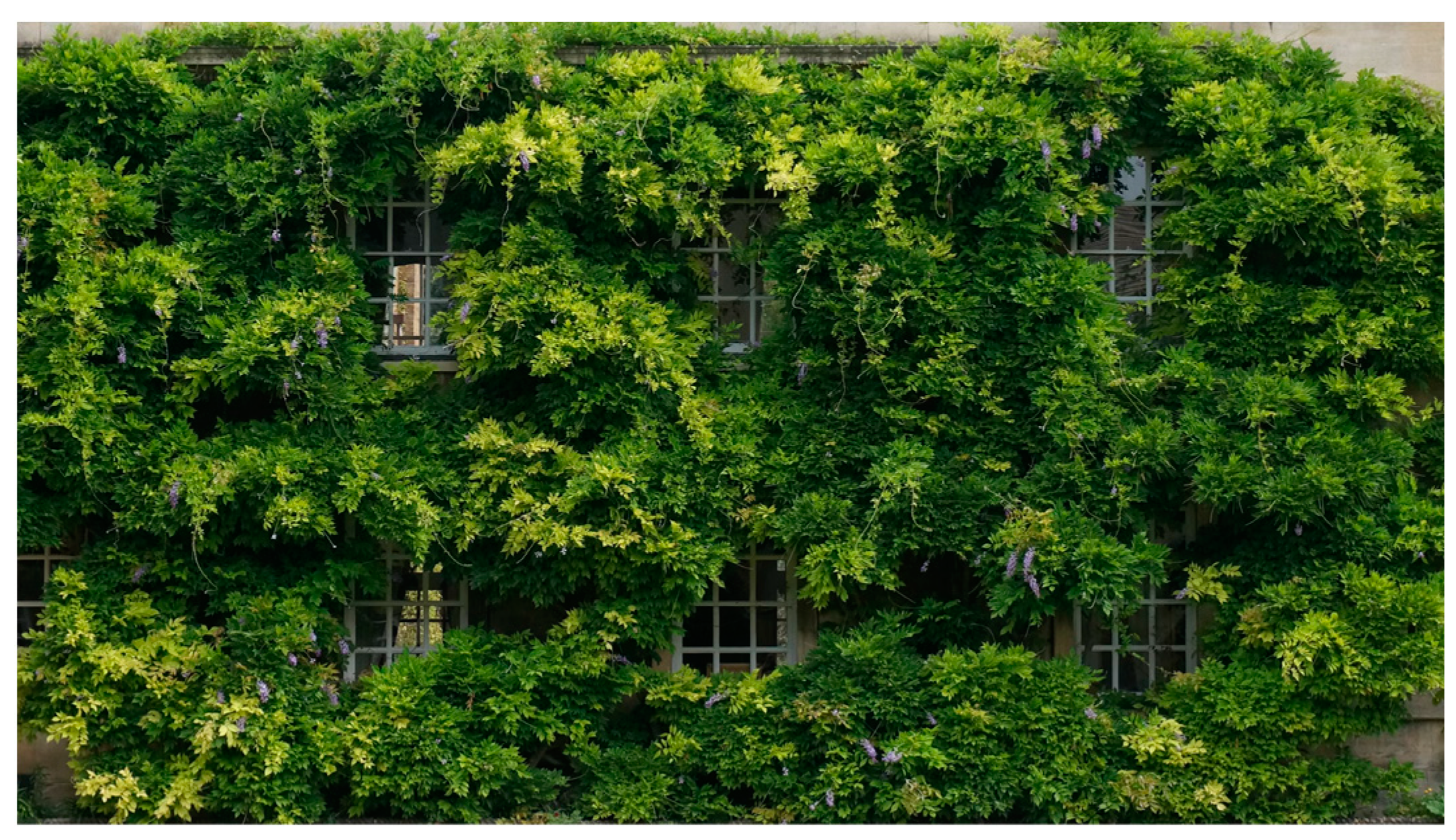



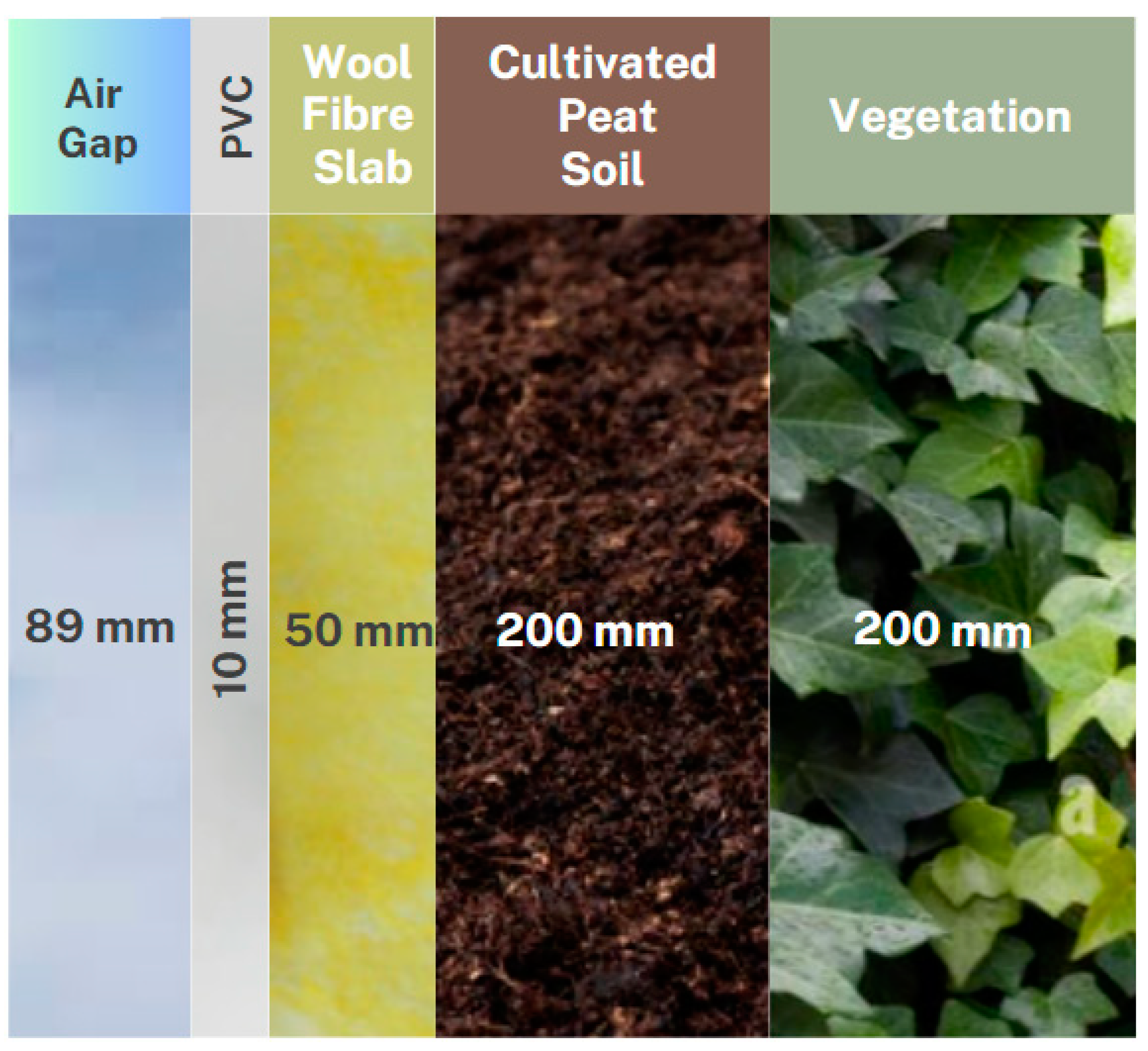
| Layer | Thicknesses (mm) | U-Value (W/m2K) |
|---|---|---|
| Wall | ||
| Autoclaved fibre cement block | 12 | 1.66 |
| Concrete block | 200 | 1.00 |
| XPS | 50 | 0.15 |
| Plaster | 20 | 3.30 |
| Total | 0.412 | |
| Windows | ||
| Double-glaze (6 mm air gap) | 7 | 2.66 |
| Doors | ||
| Glass door | 8 | 1.60 |
| Floor | 600 | 1.17 |
| Roof | 500 | 1.21 |
| Hedera canariensis gomera | ||
|---|---|---|
| Conductivity | W/mK | 0.4 |
| Specific heat | J/kgK | 1100 |
| Density | kg/m3 | 641 |
| Height | m | 0.1 |
| Leaf Area Index (LAI) | LAI | 2.7 |
| Leaf reflectivity | 0.22 | |
| Leaf emissivity | 0.95 | |
| Min. Stom. Res. | s/m | 180 |
| Max. Vol. Moisture Cont. Sat. | 0.5 | |
| Min Residual Vol. Moist. Content | 0.01 | |
| Initial vol. Moist. Content | 0.15 | |
| Roof Number | Image | Latin Name | Name | LAI * |
|---|---|---|---|---|
| 1 |  | Hedera canariensis gomera | Canary Island Ivy | 2.70 |
| 2 | 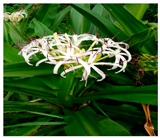 | Crinum asiaticum | Mangrove Lily | 3.31 |
| 3 |  | Tabernaemontana divaricata | Crape-jasmine | 3.07 |
| 4 |  | Bougainvillea spectabilis | Great Bougainvillea | 4.95 |
| 5 | 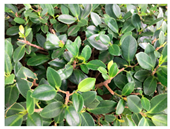 | Ficus microcarpa | Chinese Banyan | 3.75 |
| 6 | 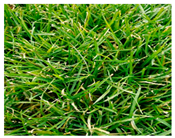 | Ophiopogon japonicus | Mondo-grass (Dark Green) | 6.66 |
| 7 | 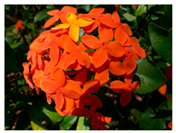 | Ixora coccinea | Orange Flower | 5.82 |
| 8 | 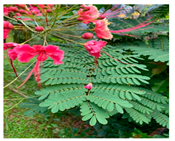 | Caesalpinia pulcherrima | Pride of Barbados | 2.44 |
| 9 |  | Phyllanthus bourgeoisii | Waterfall Plant | 6.59 |
| 10 | 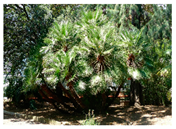 | Chamaerops humilis | Mediterranean Fan-Fern | 4.41 |
| 11 | 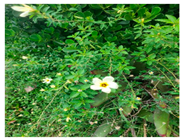 | Turnera subulata | White Alder | 3.21 |
| 12 | 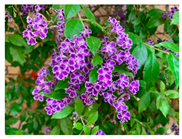 | Duranta erecta | Golden Dewdrops | 4.08 |
| 13 | 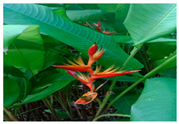 | Heliconia psittacorum | Parakeet Flower (Long Leaves) | 5.28 |
| 14 | 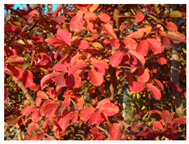 | Lagerstroemia indica | Crape Myrtle | 2.15 |
| 15 |  | Jasminum sambac | Arabian Jasmine | 3.32 |
| 16 | 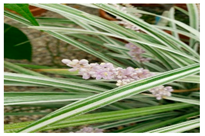 | Ophiopogon japonicus | Mondo-grass (Light Green) | 5.83 |
| 17 | 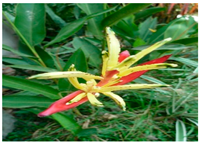 | Heliconia psittacorum | Parakeet Flower (Small Leaves) | 3.04 |
| 18 | 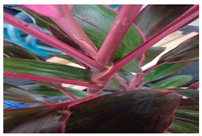 | Cordyline fruticosa | Broadleaf Palm Lily | 2.33 |
| 19 |  | Festuca glauca | Blue Fescue | 0.01 |
| 20 | 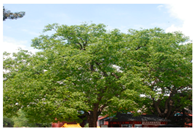 | Ziziphus jujuba | Chinese Jujube | 1.69 |
| 21 | 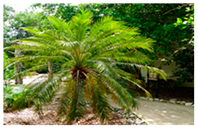 | Phoenix roebelenii | Roebelin Palm | 2.37 |
| Scenario Number | Total Source Energy | Energy Consumption (kWh/m2) | Change (%) | Thermal Discomfort Hours (h) | Change (%) |
|---|---|---|---|---|---|
| Baseline Model | 284.50 | - | 3147 | - | |
| Scenario 1 | Green Wall | 280.93 | −1.25 | 3012 | −4.29 |
| Scenario 2 | Green Wall + Roof 1 | 273.73 | −3.79 | 2874 | −8.67 |
| Green Wall + Roof 2 | 271.25 | −4.66 | 2786 | −11.64 | |
| Green Wall + Roof 3 | 272.07 | −4.37 | 2805 | −10.86 | |
| Green Wall + Roof 4 | 267.98 | −5.81 | 2595 | −17.51 | |
| Green Wall + Roof 5 | 270.11 | −5.06 | 2702 | −14.12 | |
| Green Wall + Roof 6 | 258.58 | −9.11 | 2405 | −23.55 | |
| Green Wall + Roof 7 | 261.25 | −8.17 | 2507 | −20.58 | |
| Green Wall + Roof 8 | 274.85 | −3.39 | 2876 | −8.62 | |
| * Green Wall + Roof 9 | 258.30 | −9.21 | 2423 | −23.24 | |
| Green Wall + Roof 10 | 266.92 | −6.19 | 2655 | −15.61 | |
| Green Wall + Roof 11 | 271.73 | −4.49 | 2790 | −11.35 | |
| Scenario 3 | Green Wall + Roof 12 | 268.79 | −5.52 | 2697 | −14.33 |
| Green Wall + Roof 13 | 264.03 | −7.19 | 2423 | −22.98 | |
| Green Wall + Roof 14 | 276.05 | −2.97 | 2907 | −7.61 | |
| Green Wall + Roof 15 | 273.23 | −3.96 | 2774 | −11.84 | |
| Green Wall + Roof 16 | 262.28 | −7.81 | 2498 | −20.63 | |
| Green Wall + Roof 17 | 272.42 | −4.23 | 2808 | −10.77 | |
| Green Wall + Roof 18 | 275.56 | −3.14 | 2889 | −8.19 | |
| Green Wall + Roof 19 | 280.88 | −1.27 | 3009 | −4.37 | |
| Green Wall + Roof 20 | 277.75 | −2.37 | 2959 | −5.98 | |
| Green Wall + Roof 21 | 274.94 | −3.36 | 2906 | −7.65 |
| Seasons | Winter | Summer | Total |
|---|---|---|---|
| Energy Consumption (%) | −1.19 | −8.43 | −9.31 |
| Thermal Discomfort Hours (%) | +2.88 | −25.66 | −23.55 |
Disclaimer/Publisher’s Note: The statements, opinions and data contained in all publications are solely those of the individual author(s) and contributor(s) and not of MDPI and/or the editor(s). MDPI and/or the editor(s) disclaim responsibility for any injury to people or property resulting from any ideas, methods, instructions or products referred to in the content. |
© 2025 by the authors. Licensee MDPI, Basel, Switzerland. This article is an open access article distributed under the terms and conditions of the Creative Commons Attribution (CC BY) license (https://creativecommons.org/licenses/by/4.0/).
Share and Cite
Turhan, C.; Carpino, C.; Chen Austin, M.; Özbey, M.F.; Akkurt, G.G. Impact of Green Wall and Roof Applications on Energy Consumption and Thermal Comfort for Climate Resilient Buildings. Urban Sci. 2025, 9, 105. https://doi.org/10.3390/urbansci9040105
Turhan C, Carpino C, Chen Austin M, Özbey MF, Akkurt GG. Impact of Green Wall and Roof Applications on Energy Consumption and Thermal Comfort for Climate Resilient Buildings. Urban Science. 2025; 9(4):105. https://doi.org/10.3390/urbansci9040105
Chicago/Turabian StyleTurhan, Cihan, Cristina Carpino, Miguel Chen Austin, Mehmet Furkan Özbey, and Gulden Gokcen Akkurt. 2025. "Impact of Green Wall and Roof Applications on Energy Consumption and Thermal Comfort for Climate Resilient Buildings" Urban Science 9, no. 4: 105. https://doi.org/10.3390/urbansci9040105
APA StyleTurhan, C., Carpino, C., Chen Austin, M., Özbey, M. F., & Akkurt, G. G. (2025). Impact of Green Wall and Roof Applications on Energy Consumption and Thermal Comfort for Climate Resilient Buildings. Urban Science, 9(4), 105. https://doi.org/10.3390/urbansci9040105











